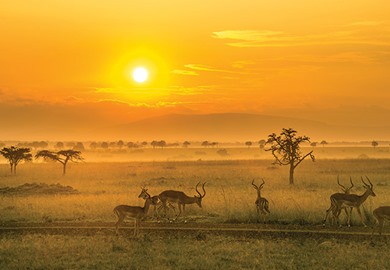Kenya Holidays
Delve a little closer into Kenya's inspiring landscapes and you will discover some of the most remarkable game viewing spots on the globe; stunning, well-protected national reserves that are home to some of the world's most beautiful endangered creatures - the fabled 'big five'. In Nairobi, Kenya's vibrant capital, the cosmopolitan cityscape gives way to vast Nairobi National Park. Here, the world's most revered safari creatures stalk the wild plains against a backdrop of the sprawling metropolis.
Further south, in the national park of Maasai Mara, intrepid travellers and wildlife photographers alike are indulged with a world-class 'big five' safari experience. Here, visitors may catch an unforgettable glimpse of an elusive leopard strolling across the vast plains, elephants bathing in the shallow waters of a watering hole, and majestic lions seeking respite from the heat in the shade of a leafy acacia tree.
Of course, there is more to Kenya than incredible safari experiences; like much of Africa, this is a land of striking contrasts, where hundreds of years of time-honoured traditions and culture combine with rural villages and cosmopolitan cities that are constantly looking to the future.
Vibrant emerging cities, fascinating ancient traditions, a rich artistic heritage and some of the most incredible wildlife viewing in the world - Kenya is a destination quite like no other.




